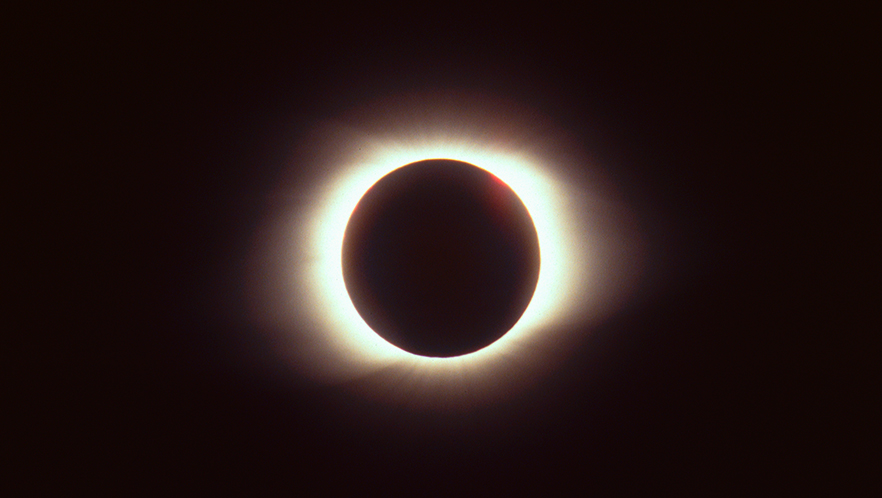There hasn’t been a coast-to-coast solar eclipse in the United States since 1918, so millions of Americans are anxious to observe this rare phenomenon firsthand next week. And many of them will have their cameras ready to capture the moment so they can relive it again and again.
A solar eclipse occurs when the moon passes between the sun and Earth, blocking all or part of the sun. On Aug. 21, all of North America will experience a partial solar eclipse that will last two to three hours. Certain parts of the United States will witness a total solar eclipse.
But, of course, we’re talking about the sun. And, as cool as it will be to see the eclipse, it’s not worth risking permanent damage to your eyes. We talked to a pair of experts to get advice on how to safely view and photograph the eclipse.
Protect Your Eyes
Remember how your mom always told you not to the look at the sun? She was right. Looking at the sun can do permanent harm to your eyes, even during an eclipse, so it’s extremely important to take the necessary precautions.
If you’re not careful, the sun can burn the cells in your eyes down to the retina, said Sally Brummel, planetarium program manager at the University of Minnesota’s Bell Museum of Natural History.
“When you look at the sun, it might not hurt your eyes in the moment, but the damage shows up later,” she said. “Any time you look at the sun directly, it will cause damage.”
Be sure to look for ISO certification on products designed for safely viewing the eclipse. Glasses are already sold out, but limited supplies of binoculars and telescopes remain available.
And, if you plan to shoot photos, do not look directly through your camera’s viewfinder unless you are using a special solar filter. The camera itself will not protect your eyes.
Capture the Moment
Reed Hoffmann, a professional photographer based in Overland Park, Kansas, plans to photograph the eclipse from northwest Missouri, which is within a 70-mile-wide “path of totality” where viewers will be able to see a total eclipse. He’ll use five different cameras to capture everything.
Reed recommends using a camera with a good telephoto lens (at least 200mm) and a solar filter, and he warns that automatic settings are a recipe for failure. Instead, he says to put the camera in manual and play with the exposure until you like the results.
“Do some tests with the sun beforehand so you know what ISO, shutter speed and aperture to be shooting at,” said Reed, who has helped train the photography experts at the Camera Experience Shops inside about 120 Best Buy stores. “The good news is that you can figure out what exposure you’re going to need anytime between now and the eclipse by getting a solar filter, putting it on the camera in front of the lens and taking some test shots on a sunny day.”
Finally, he suggests not shooting too many photos.
“This is a rare event,” Reed said. “Just be part of it. Relax, look up and enjoy.”
Consider Video
You could use your smartphone to capture the eclipse by taping eclipse glasses over the lens, but you’ll probably just end up with a photo of a tiny orange circle surrounded by blackness. Instead, Reed recommends using your smartphone or camera to shoot video of the scene around you as the world goes dark and people react.
“The audio will be as powerful, or more powerful, than the video itself,” he said. “You’re going to hear everybody saying, ‘Oh my goodness, that’s amazing. I’ve never seen anything like that!’”
He plans to use a mirrorless camera to capture video starting about 15 minutes or so before totality. He wants to get a wide shot that shows the sky going dark and the reaction of people nearby.
Planning to view the solar eclipse on Aug. 21? Click here to learn more about the eclipse and the products needed for viewing it safely.


